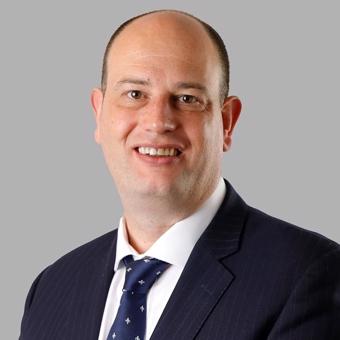Mark Brandwood - managing partner at Brabners - talks mergers, branching out from legal services and changes at the firm.
Mark, how did the acquisition of Lawson Coppock & Hart come about?
We are always on the lookout for potential acquisitions which might add something to our business and Lawson Coppock & Hart was introduced to us through an agent. They had been considering their own future for some time and had decided now was the appropriate time for them to merge with another firm.
Why Lawson Coppock & Hart?
Lawson Coppock & Hart is a well-established and highly regarded law firm with an excellent reputation in private client and commercial property work. The transaction will significantly increase the size of our private client capability in Manchester, as well as adding to our commercial property offering. For us, this is obviously a very small acquisition; only involving five fee earners coming across, but the niche private client angle was what made it particularly attractive.
Have you done any similar mergers in the past?
Yes, we have. The practice as it currently stands is the product of a number of mergers over the last thirteen years going back to 2001. The corporate and property partners of Berrymans Lace Mawer joined Brabners in 2001 which at that point almost doubled the size of our Liverpool office.
In 2002 we merged with boutique corporate finance firm, Chaffe Street which saw us establish an office in Manchester. The niche and highly regarded commercial and sports law team from James Chapman & Co joined us in 2006 and in 2009 we completed a merger with Liverpool-based Bremners Solicitors in order to create one of the largest and most experienced specialist social housing teams in the sector. And in 2011 we merged with Murphy Hodgkinson, an award-winning niche firm that had a particularly strong reputation for its expertise in residential property development.
What is important in identifying the right merger?
It is important that there is a real synergy between the businesses and a tangible gain to be achieved from pursuing the merger. In terms of what the synergies are, firms should look at gaining new areas of expertise, access to a different client base, and collaborations and opportunities between the teams being brought together, which ultimately create a more profitable business and, most importantly, improve the service offering to clients.
The takeover further increases your presence in the North West but are there any other regions you’re proactively looking at expanding into?
Whilst we are not actively looking to expand outside the North West region, we are always alive to interesting opportunities which may present themselves. We remain on the lookout for further suitable merger opportunities in the North West. It would make particular sense for our business to find those opportunities in Manchester and grow our Manchester office. We also see scope for further growth in our Preston office whether by merger or lateral hires.
Have you had any thoughts about branching out into non-legal services?
About 10 years ago we recognised that the absence of a critical mass of corporate finance accountants in Liverpool was limiting corporate deal activity in the Merseyside area. We therefore decided to invest in our own in-house team of corporate financiers in our Liverpool office. In 2010 we merged that business with corporate finance firm The Steve Stuart Partnership to create a joint venture comprising award winning accountancy professionals operating under the Brabners Stuart name. That team works closely with our Liverpool corporate team. The launch of Brabners Stuart was a practical response to the market’s changing needs after a growing number of SME business owners and entrepreneurs told us they wanted a more integrated and efficient service from their legal and lead advisory teams when it came to M&A and fundraisings. We are still one of the few law firms to have a corporate finance offering in-house.
The firm also recently announced that it had combined its Employment and Pensions teams. What prompted that move?
The move was in response to the increasing trend of employers seeking combined employment and pensions law advice when harmonising employee benefits. A number of changes to legislation including the introduction of the auto enrolment regime, the abolition of the default retirement age, and issues relating to the flexible retirement of staff have created the need for legal advice in both an employment and pensions context. Combining the departments strengthens our employment and pensions team and enables us to provide a seamless and supportive offering to our clients.
What are your main aims & ambitions for the firm over the next five years?
We would like to grow our practice from being a £30m turnover business to a £50m turnover business. To achieve that will require a combination of organic growth, lateral hires and a merger, or possibly two! However, achieving those mergers is obviously dependent on our finding the right opportunities that make sense for the business.
Finally, any words of wisdom for readers of The Brief who may be on the acquisition, merger or consolidation trail?
As I said earlier there needs to be a real synergy between the businesses, with particular emphasis on how the merger will improve what is on offer to clients. It is also essential to keep in mind that: “Turnover is vanity, profit is sanity.”












